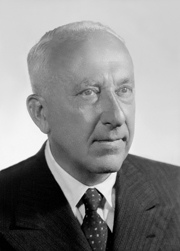Giovanni Paolo Panini – artist
Painter who preserved scenes of Rome
Giovanni Paolo Panini, an artist mainly known for his views of Rome, was born on this day in 1691 in Piacenza, in Emilia-Romagna. He is particularly remembered for his view of the interior of the Pantheon, commissioned by the Venetian collector, Francesco Algarotti, in around 1734. The Pantheon was as much a tourist attraction in Panini’s day as it is today and Panini manipulated the proportions and perspective to include more of the interior that is actually visible from any one vantage point. Indeed, many of his works, especially those of ruins, have slightly unreal embellishment. He sought to meet the needs of visitors for painted postcards depicting scenes of Italy and his clients were often happy with minor distortions of reality if it meant they could show off a unique picture. As a young man, Panini trained in Piacenza but then moved to Rome where he studied drawing. His work was to influence other painters, such as Canaletto, who resolved to do for Venice what Panini had done for Rome and, of course, enjoyed enormous fame and success. Much in demand, Panini also became famous as the decorator of Roman palaces. Read more…
________________________________________________________________
Saint Joseph of Copertino
Flying friar now protects aviators
Saint Joseph, a Franciscan friar who became famous for his miraculous levitation, was born Giuseppe Maria Desa on this day in 1603 in Copertino, a village in Puglia that was then part of the Kingdom of Naples. Joseph was canonised in 1767, more than 100 years after his death, by Pope Clement XIII and he is now the patron saint for astronauts and aviation. Joseph’s father, Felice Desa, had died before his birth leaving large debts. After the family home was seized to settle what was owed, his mother, Francesca Panara, was forced to give birth to him in a stable. Joseph experienced ecstatic visions as a child at school. When he was scorned by other children he had outbursts of anger. He was apprenticed to a shoemaker but when he applied to join the Franciscan friars he was rejected because of his lack of education. He was accepted in 1620 as a lay brother by the Capuchin friars only to be dismissed because his constant ecstasies made him unfit to carry out his required duties. Forced to return home he pleaded with the Franciscan friars near Copertino to be allowed to work in their stables. Read more…
___________________________________________________________________
Rinaldo ‘Dindo’ Capello - endurance racing driver
Three times winner of the Le Mans 24 Hours
Rinaldo ‘Dindo’ Capello, one of Italy’s most successful endurance racing drivers, was born on this day in 1964 in Asti, in Piedmont. During a period between 1997 and 2008 in which there was an Italian winning driver in all bar two years, Capello won the 24 Hours of Le Mans, the most prestigious endurance race on the calendar, three times. Only Emanuele Pirro, his sometime Audi teammate and rival during that period, has more victories in the race among Italian drivers, with five. Pirro won in 2000, 2001, 2002, 2006 and 2007, Capello in 2003, 2004 and 2008. Capello’s career record also includes two championship wins in the American Le Mans Series and five victories in the 12 Hours of Sebring. He is also record holder for most wins at Petit Le Mans, the race run annually at Atlanta, Georgia to Le Mans rules, with five. Alongside teammates Tom Kristensen and Allan McNish, he was regarded as the quiet man of the all-conquering Audi sports car team, although his contribution was every bit as impressive. Capello’s ambitions when he began his single-seater career were the same as other young drivers - to work his way up to Formula One. Read more…
__________________________________________________________________
Sergio Marchionne - business leader
Man who saved Fiat divides opinions in Italy
Controversial business leader Sergio Marchionne was born on this day in 1952 in the city of Chieti in the Abruzzo region of Italy. The former chief executive of Fiat Chrysler Automobiles, who died in 2018, was credited with saving the iconic Italian motor manufacturer from potential extinction in 2004, when Fiat was on the verge of being taken into the ownership of the banks that were keeping it afloat. It had suffered cumulative losses of more than $8 billion over the previous two years and a strategic alliance with General Motors had failed. Its share of the European car market had shrunk to an historic low of just 5.8 per cent. Yet after the little known Marchionne was appointed chief executive at the company's Turin headquarters it took him only just over a year to bring Fiat back into profit. When Fiat opened a new assembly line at the Mirafiori plant outside Turin in 2006, Marchionne was hailed as a hero. The inauguration celebrations were attended by politicians of all parties and trade union leaders. Soon, the new Fiat 500 was launched, tapping into Italian nostalgia by reprising the name that was synonymous with the optimistic years of the 1950s and 60s. Read more…
Home














